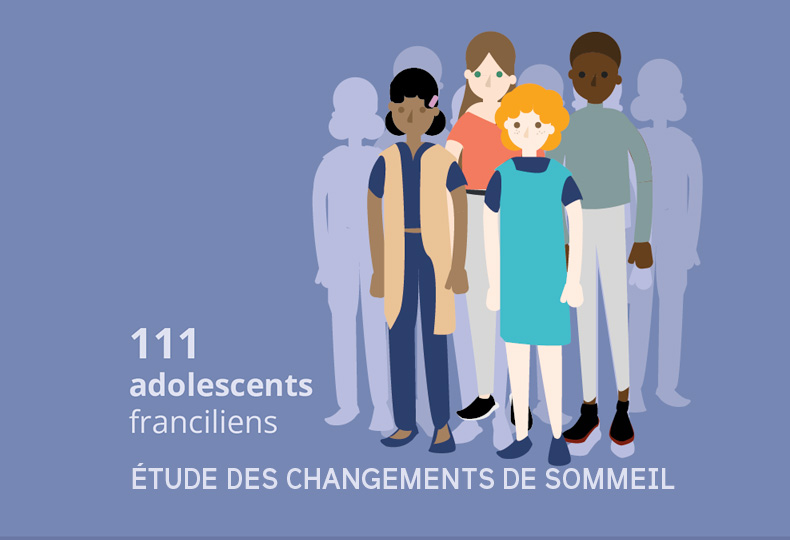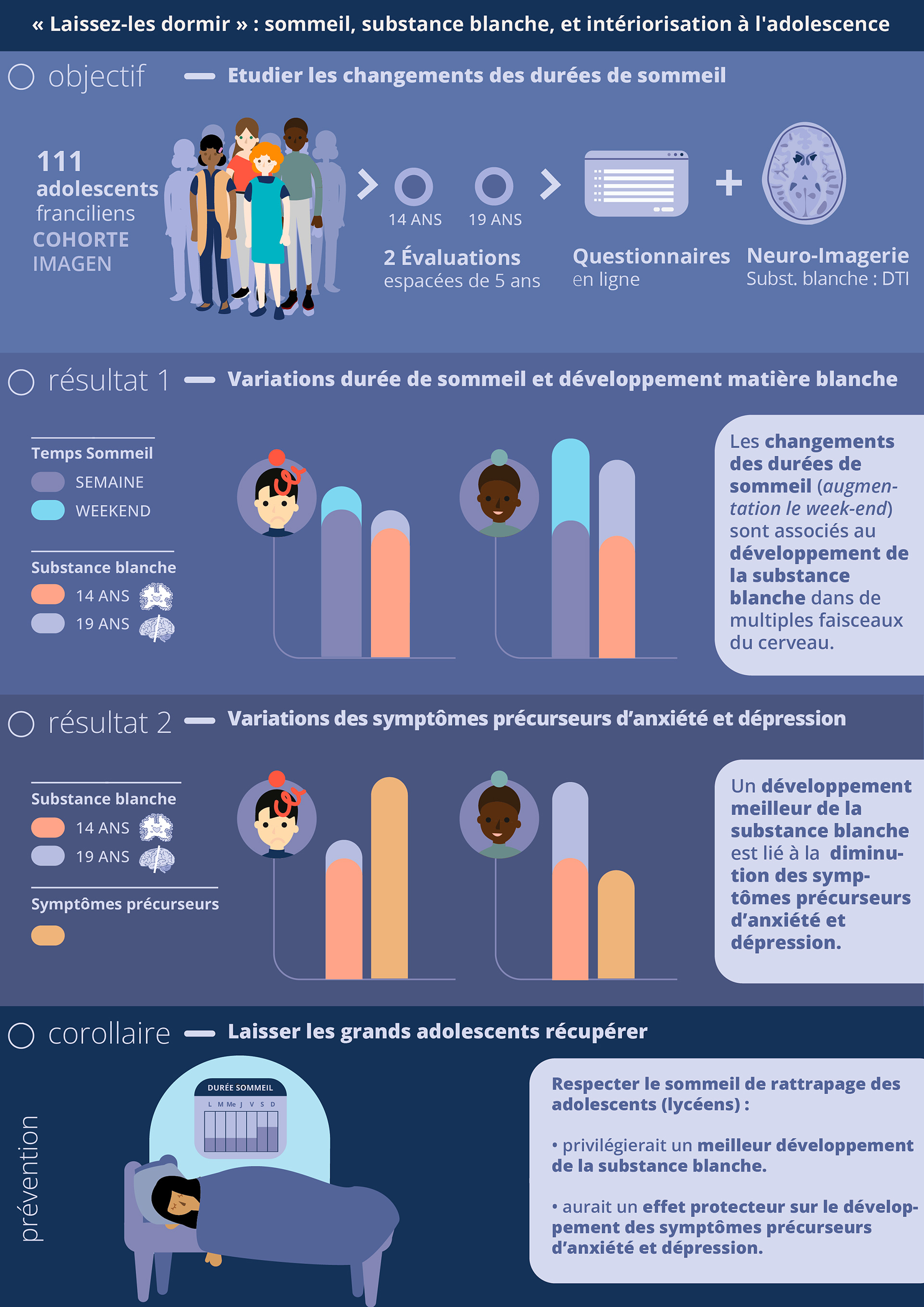Let the teenagers sleep!

Researchers from INSERM and the Borelli Centre (ENS Paris-Saclay - Université Paris-Saclay) measured sleep habits and internalization problems at a 5-year interval, using self-evaluation questionnaires in adolescents from the Ile-de-France region followed from 14 to 19 years of age.
Sleep, white matter and internalization * in adolescence
Mathematical co-variations were sought between changes in sleep schedules during adolescence and white matter development.
The researchers measured sleep patterns and internalizing problems at a 5-year interval, by self-report questionnaires in French-speaking adolescents followed from 14 to 19 years of age, without major somatic, neurological or psychiatric disorders.
Participants underwent DTI scans at two time points. White matter microstructure was measured by diffusion tensor imaging (DTI).
* internalization: premise of anxiety or depressive disorders.
Résultats
Between 14 and 19 years of age, increases in time spent in bed at weekends, and increases in the change in time in bed between weekdays and weekends, were associated with changes in the microstructure in several white matter bundles.
The relationship between increased weekend bedtime and decreased internalizing problems was mediated by changes in the superior longitudinal bundle; this bundle connects associative cortices that develop during adolescence.
Conclusions
These results imply that insufficient sleep may have long-term negative effects on white matter development and internalization. But longer sleep duration at weekends could be a natural way of reacting and protecting.
A logical corollary of this work would be to respect the catch-up sleep of teenagers in high school (and after...).

